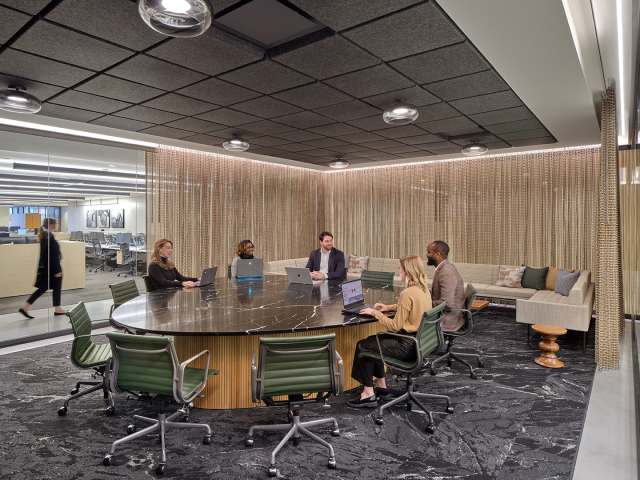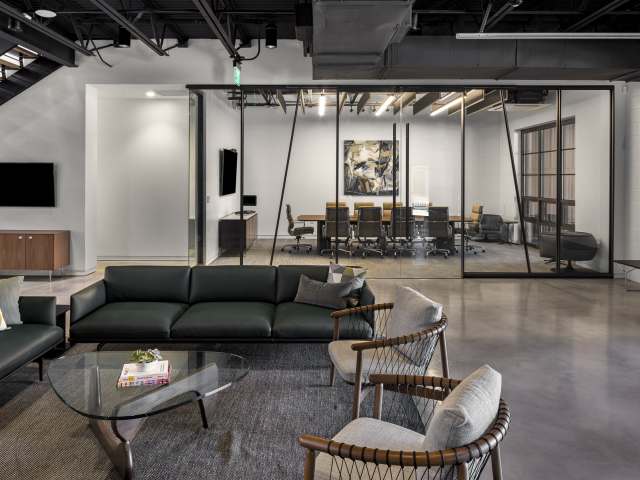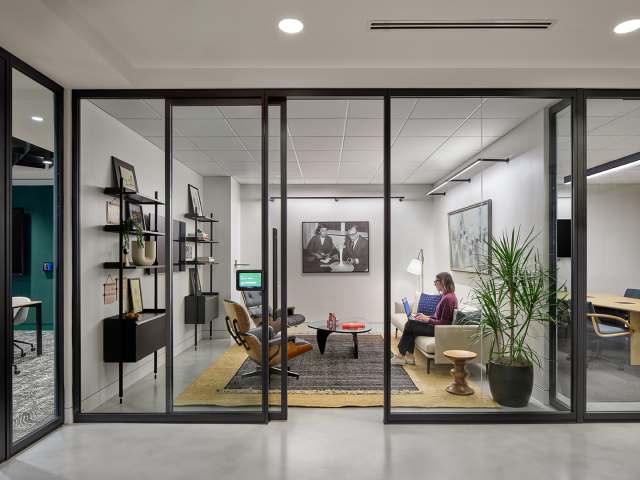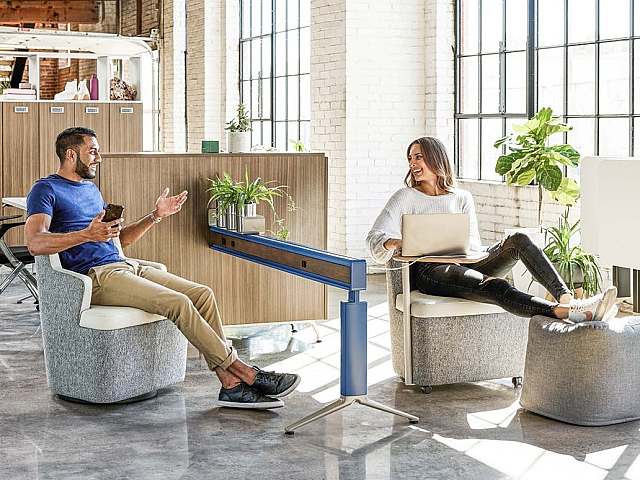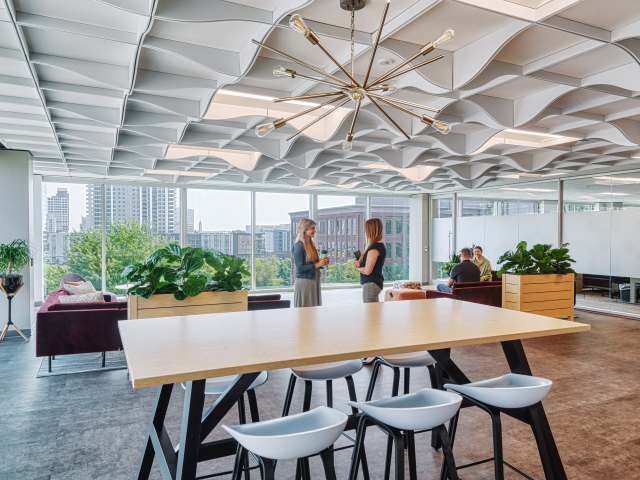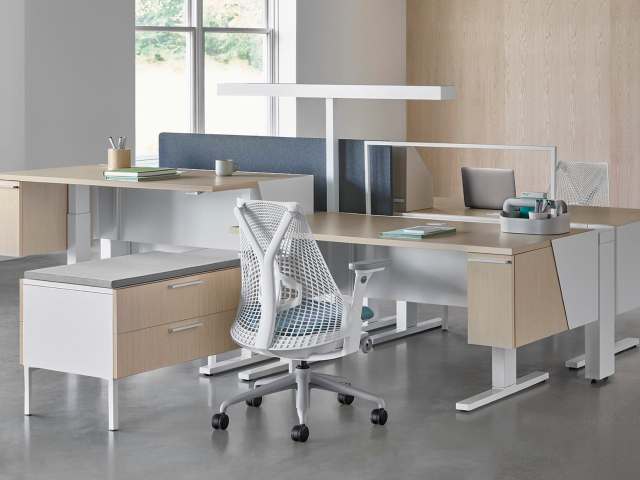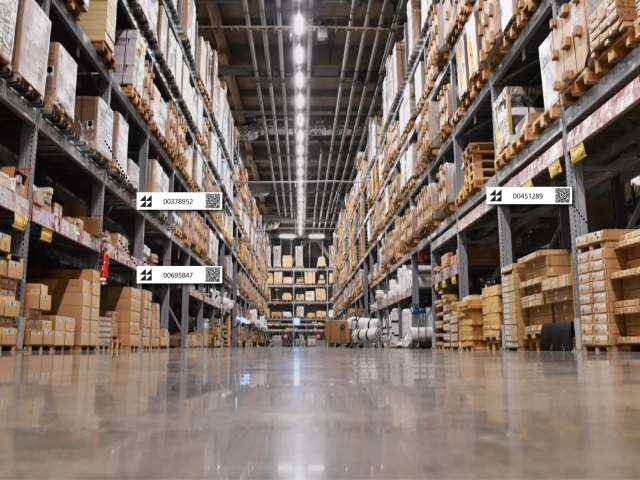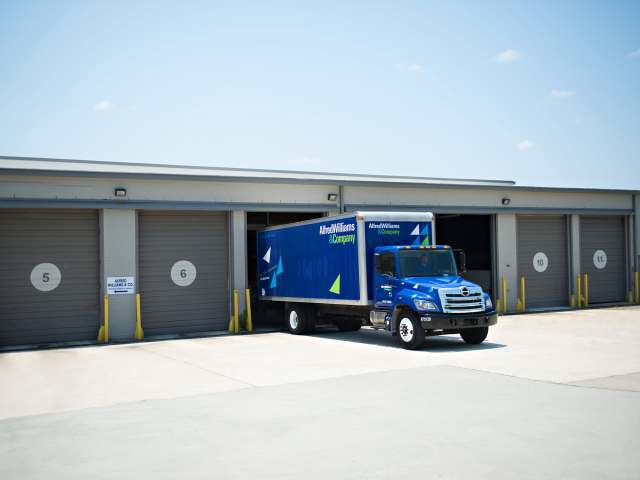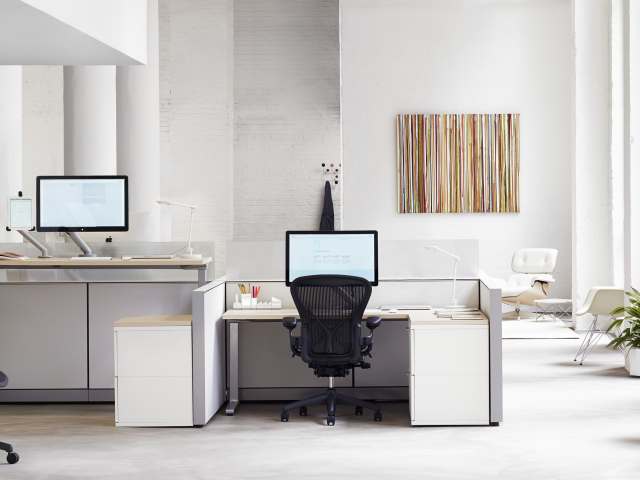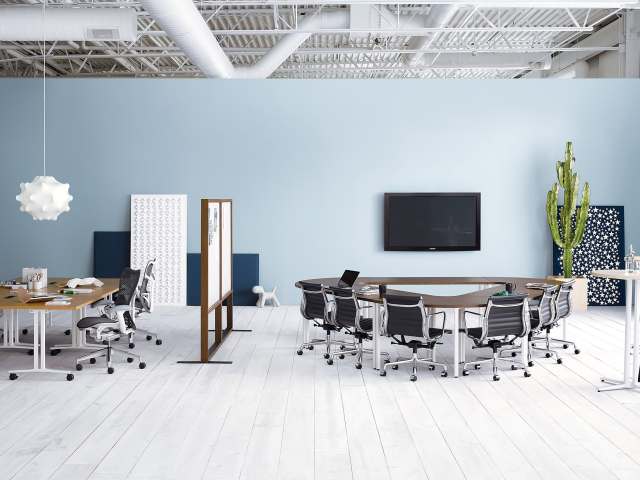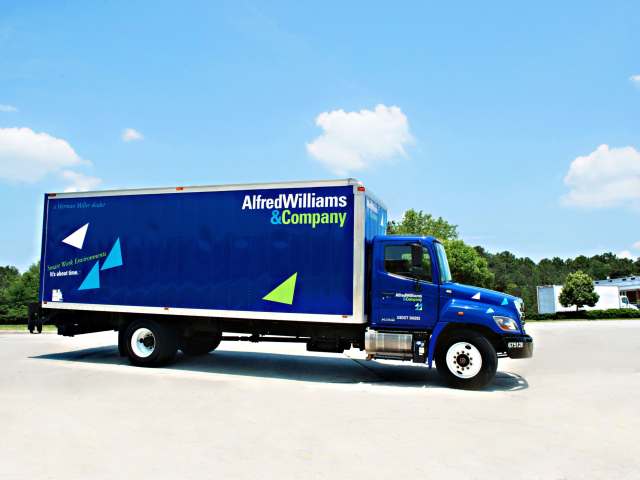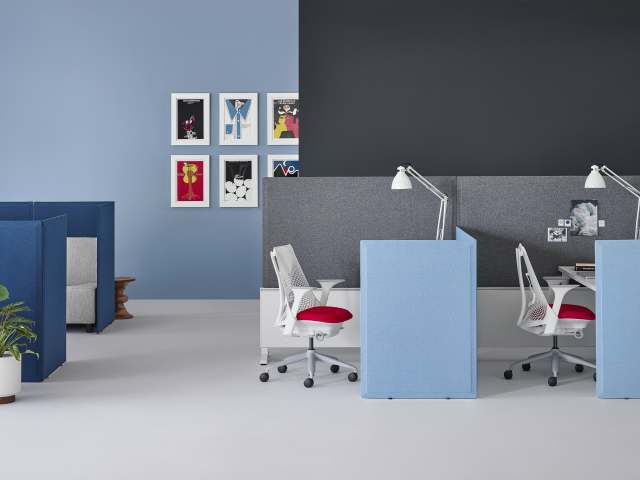Five Ways to Improve Employee Engagement, Inspired by Hospitality
Optimized Workplace Strategy for Improving Employee Engagement: In this article, we navigate the landscape of the future of work, emphasizing the role of change management and innovative interior design in fostering a workplace that not only attracts but retains employees.

Sign up to get these in your inbox each month!
From our conversation with Simon Davis, Purposeful Intent, on WorkPoints, season 1, episode 2.
In the dynamic evolution of office workplaces, the concept of 'earning the commute' has become increasingly significant. This phrase encapsulates the heightened expectation that employees have when dedicating time and effort to travel to the workplace—anticipating an experience that transcends the ordinary. In this post, we navigate the landscape of the future of work, emphasizing the role of change management and innovative interior design in fostering a workplace that not only attracts but retains employees. By delving into the realm of true hospitality, we explore how it contributes not only to bringing people back to the office but also instills a genuine desire to be part of a remarkable workplace, shaping the future of work experiences.
True hospitality means anticipating and responding to felt needs.
True hospitality goes beyond superficial perks and amenities; it revolves around anticipating and responding to the needs of individuals. Some companies have mastered this craft, seamlessly integrating hospitality into the fabric of their workplace culture. Everything, from the moment one steps into the lobby, emanates a curated experience reminiscent of high-end hotels in bustling cities like New York or Las Vegas.These organizations recognize that true hospitality is not merely about extravagant perks; it is about creating an environment where every aspect, from the ambiance to the amenities, is deliberately crafted to enhance the overall experience. The lobby's distinct aroma, carefully chosen music that uplifts the mood, and an overall atmosphere that exudes warmth and welcome are all elements of this nuanced approach.

1. Thoughtful Touches
At the heart of hospitality lies the ability to provide thoughtful touches that go beyond the expected. An excellent practice in some workplaces involves the availability of personal essentials based on employee requests. Carefully curated, this ranges from Band-Aids and stain sticks to allergy medications and vitamin C. This attention to detail extends to providing access to a hospitality team via text, ensuring that any needs or requests are promptly addressed.
In this environment, the organization recognizes that it is the little things that matter—a realization that extends to providing solutions for everyday inconveniences. It is the recognition that a forgotten charger or a missing pair of headphones can significantly impact an employee's day. By addressing these needs with efficiency and care, companies demonstrate a commitment to ensuring the seamless flow of work.
2. A Culinary Experience
Hospitality extends into the culinary realm, where the focus is not on lavish freebies but on intentional choices that promote well-being and foster a positive work atmosphere. From healthy lunches to a variety of snacks and even a 2:30 ice cream, the emphasis is on sustaining energy and fostering a positive atmosphere.
Gone are the days when the allure of free pizza or a turkey club sufficed to entice employees back to the office. Today, the emphasis is on providing nourishment that not only satisfies hunger but also contributes to a holistic sense of well-being. By offering food that is not only delicious but also aligns with employees' health-conscious preferences, organizations communicate a commitment to their workforce's overall wellbeing.

3. The Three Cs: Collaboration, Casual Collision, and Capability
To create an office environment that resonates with employees, organizations must cater to the three Cs: Collaboration, Casual Collision, and Capability. Hospitality contributes to capability, where employees access tools, resources, and collaborative spaces not available in their home offices. This intentional design fosters an environment where work that requires in-person interaction thrives. Whether it's high-tech meeting rooms, cutting-edge equipment, or designated creative spaces, the office becomes a hub for tasks that demand in-person interaction and collaboration.
4. Scalability and Starting Small
The key to success lies in scalability and starting small. Understanding the unique needs of employees and proactively addressing them is at the core of this approach. It involves intentional design choices, such as optimizing acoustics to create a conducive working environment, ensuring the availability of collaboration rooms, or providing essential amenities that make a significant impact on employees' daily experiences.
For organizations with varying budgets, starting small can involve a thoughtful approach to providing hospitality services. It might begin with the creation of a dedicated space for collaboration, equipped with the necessary tools and technology. As the organization grows, so can the hospitality initiatives, gradually expanding to meet the evolving needs of the workforce.
5. The Power of People
The true heartbeat of hospitality lies in the people who breathe life into these initiatives. From the emergence of roles like workplace concierges to the presence of thoughtful leaders, the human touch plays an instrumental role in creating an environment where individuals feel valued and eager to return.
In many organizations, the role of a workplace concierge has become integral, especially for hybrid workers who may only visit the office sporadically. These individuals are equipped to handle the practical needs of employees, ranging from reservations to navigating office logistics. The power of a friendly face at the entrance or a warm greeting from a workplace concierge can significantly influence an individual's perception of their workplace.
Furthermore, thoughtful leaders who prioritize the well-being and experience of their employees contribute immensely to the success of hospitality-driven initiatives. Recognizing the impact of seemingly small gestures, such as a handwritten note to a new associate or a personalized email from the CEO, leaders create a culture where employees feel appreciated and understood.

Conclusion
True hospitality is about creating a workplace experience that goes beyond the ordinary, anticipating needs, and responding with thoughtful touches. It's not about extravagant offerings but rather about instilling a sense of value and belonging. As workplaces continue to evolve, integrating hospitality into the core of the organizational culture becomes a powerful tool for attracting and retaining talent. By understanding that every interaction, no matter how small, contributes to the overall experience, organizations can cultivate an environment where employees not only return but actively seek to be part of a workplace that values their well-being and contribution.


